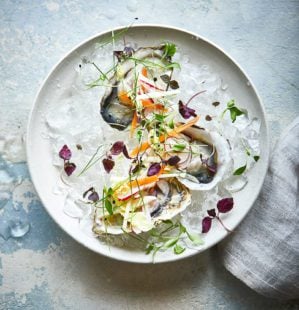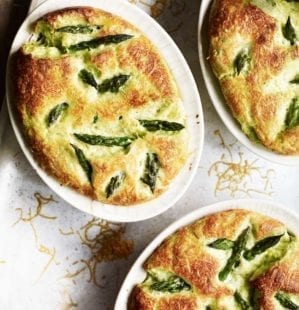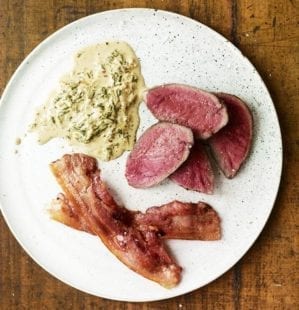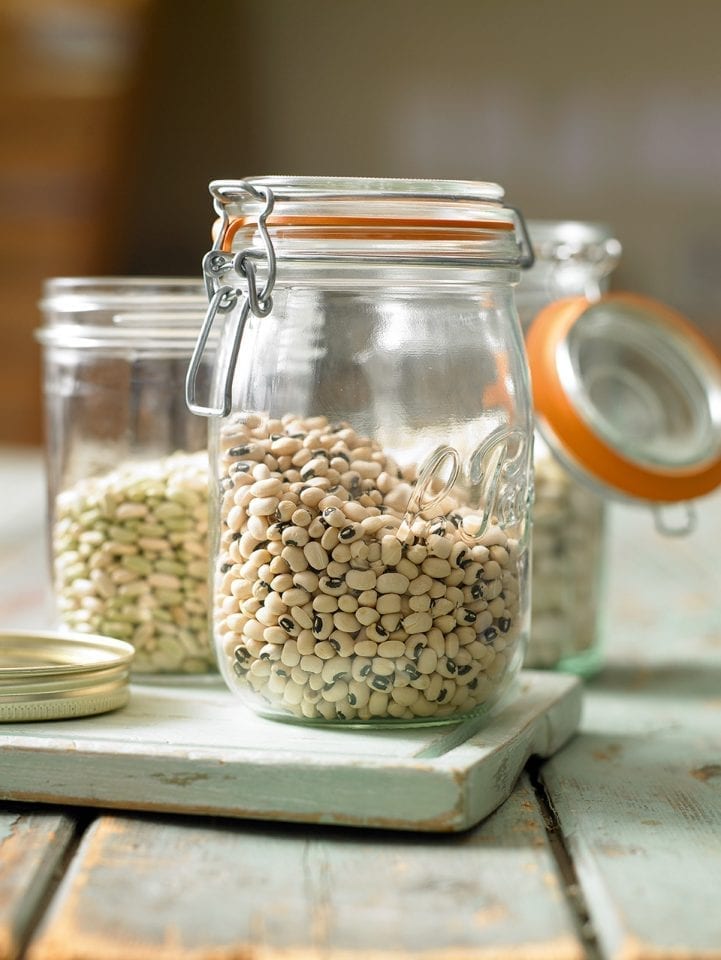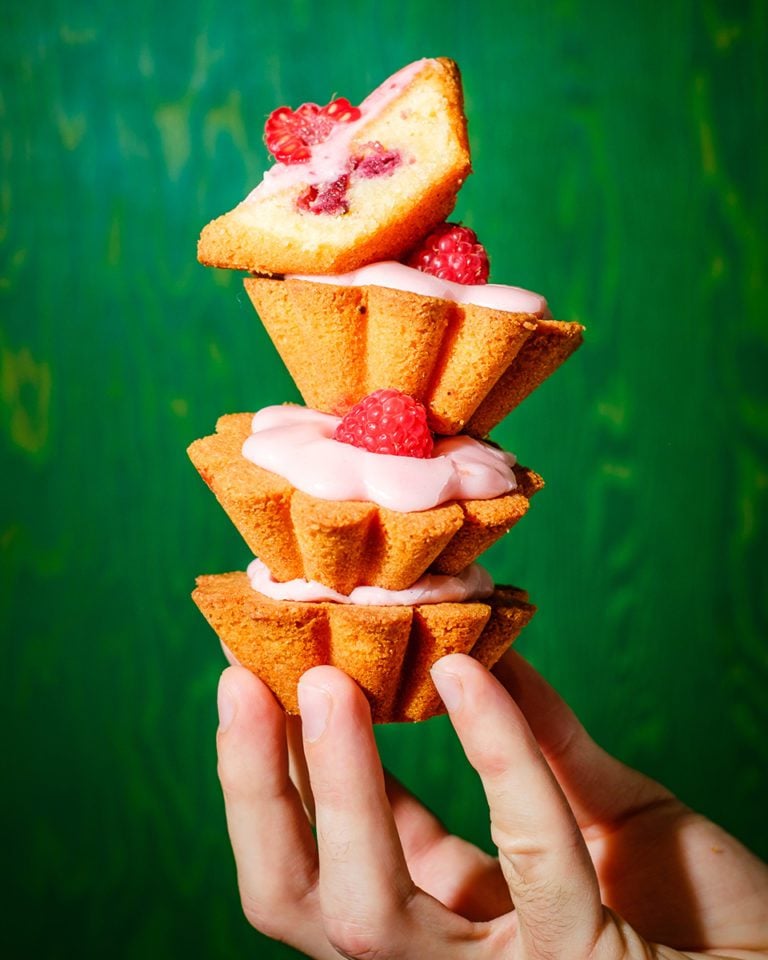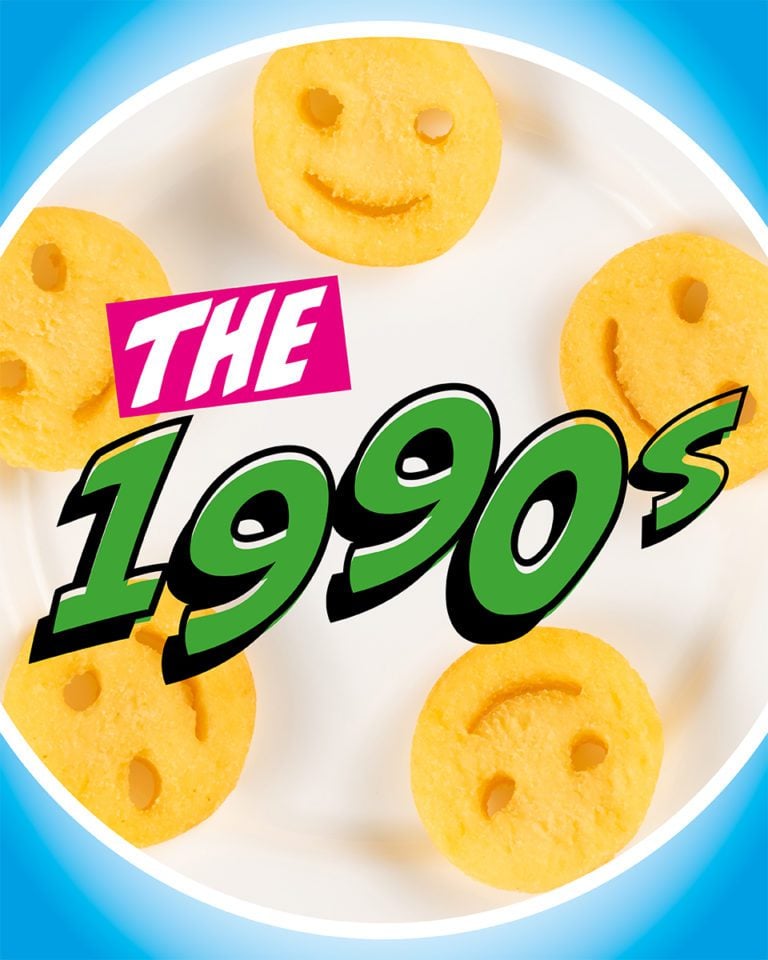Is cooking food for someone your love language?
If you’re someone for whom food is important – the planning, the choosing of ingredients, the careful prep – the eating and sharing can be as revealing as any verbal or physical exchange. Clare Finney talks to chefs, food writers and psychologists to examine how something as simple as making scrambled eggs can become a significant marker in a relationship…
Clare’s new book Hungry Heart: A Story of Food and Love is out now (published by Quarto).
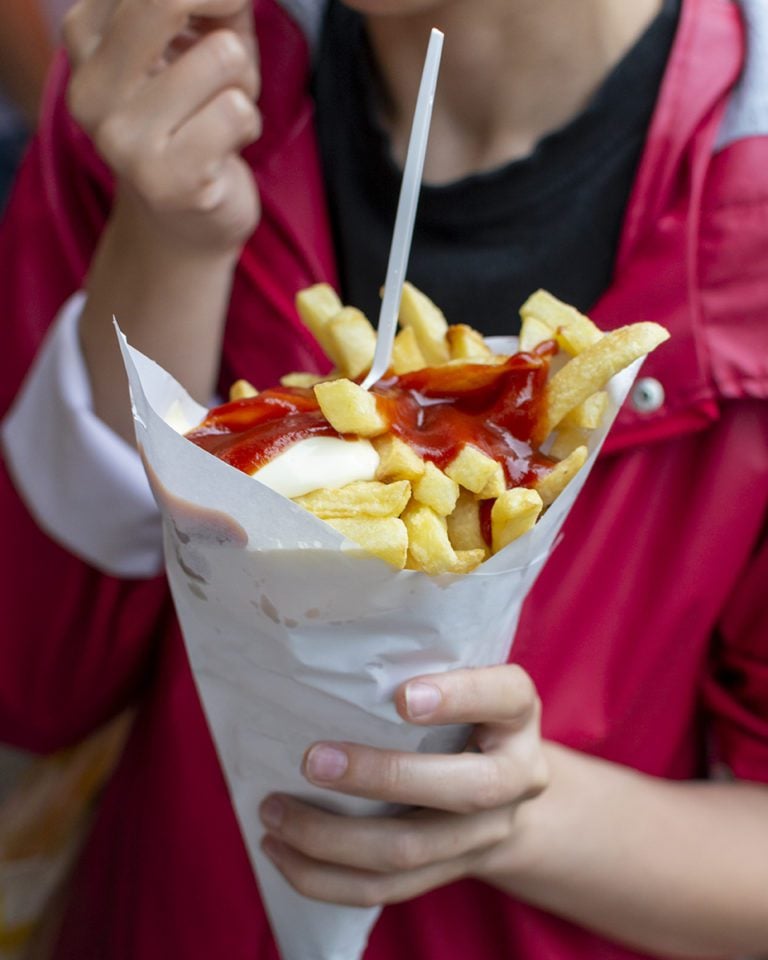
“There aren’t many people in your life whose food you could taste and know that they made it – but I would always be able to tell Sarit’s food,” declares Itamar Srulovich. After 20 years of marriage and 10 years of running their beloved restaurant group Honey and Co, Itamar can see his wife’s signature in any salad, soup or pastry. “I would know it from the way it looks, the personality, the sheer Sarit-ness of it,” he continues, his eyes shining. “She is a huge talent, so to have her cooking at home, just for us, is pure joy.”
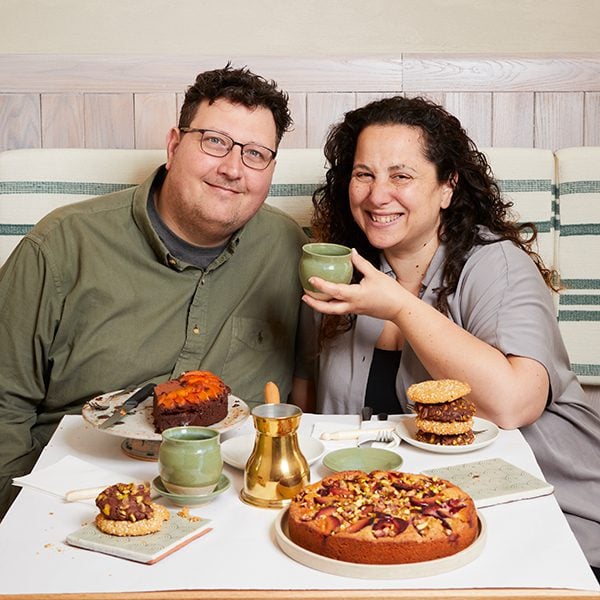
Before meeting Sarit – in a restaurant kitchen in Tel Aviv – Itamar didn’t cook at home. Or if he did, it was to experiment for the restaurants he worked in. It was Sarit who taught him that home food was different from restaurant food but just as delicious. And it’s out of the home food they’ve created together that their relationship – and, eventually, business – has been born. To sit in Honey and Co on Lamb’s Conduit Street, tearing into one of Sarit’s orange blossom buns and listening to Itamar talk is to feel the extraordinary connection between food and love; between cooking and romance.
It’s the same eating at José – beloved Spanish chef José Pizarro’s tapas bar on London’s Bermondsey Street – savouring his husband Peter’s Tarte de Santiago while listening to José talk: “Some of my best memories are times shared with Peter at home, in the kitchen with the dogs settled by us, cooking together, then catching-up over a good meal.”
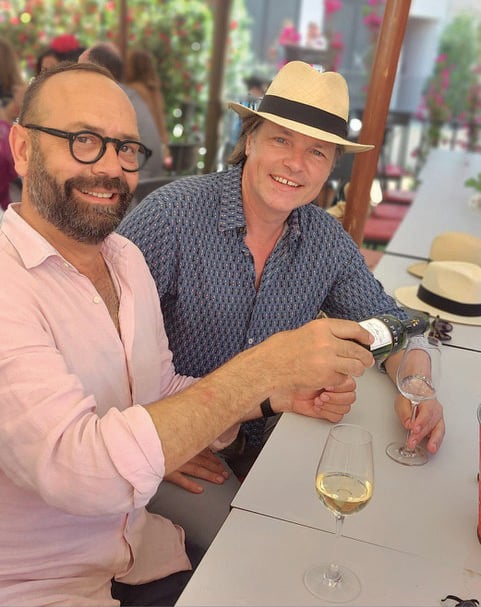
I’ve spent the past few years researching, talking and writing about is why food has this power, both to forge new connections and cement old ones.
The result is my just-published book, Hungry Heart: A Story of Food and Love, in which I explore the manifold ways in which food touches all relationships, from parents to partners, colleagues and friends. I finish on romantic love: the love we associate with food perhaps more than any other, thanks to film, music, literature and – of course – advertising, which invariably suggests the most romantic foods are strawberries, chocolates and oysters. Yet as I spoke to psychologists, anthropologists and couples and reflected on my own relationship, I realised the real romance of food lies less in the grand gestures and more in the little things: knowing which treat will cheer your partner up after a bad day, your favourite local restaurant at which you both have your go-to order and the micro-rituals you develop with time, like Friday night takeaways or making that first cup of tea in the morning.
“I should have known that the man who took pocket chopsticks to the pub for the purpose of eating crisps would be particular in other areas of life...”
It’s in the brown butter scrambled eggs food writer Bre Graham devised by accident for her now-boyfriend when she cooked in his flat for the first time and found his hob hotter than expected – hence the accidentally browned butter. “I was out of my comfort zone and trying to impress him,” she recalls. Now those scrambled eggs are a house favourite and the recipe even features in her new cookbook A Table for Two. For Bre, romance means sharing: not Ottolenghi-style platters best suited for group dinners, but a whole fish, small roast chicken or crêpes suzette – dishes, she says, that are “too much effort for eight people but a lovely amount of effort to make for a couple. To share food is an intimate thing.”
I’m with Bre – not on the crêpes suzette, which I consider an insult to batter and brandy, but on sharing food, which to me is a form of culinary courtship. Beyond conversation, meals are the main medium through which we express ourselves and how we feel about others. Says José: “Food is our language of love: the way we express it, the way we experience it – and how we share love with others, too.”
A meal is a shared experience, whether it’s a takeaway pizza or a tasting menu, and for prospective couples the ‘Here, try some of this,’ ‘Can I try yours?’, ‘You have the last piece’ charade can be as revealing as any verbal or physical exchange. To share is to create a sense of “fun and play,” says Bre. You can get that from a dozen oysters – but you can also get it from seafood spaghetti, a recipe for which she includes in her book: carefully counting out clams to ensure they’re divvied up equally, finding a jewel-like prawn in the tangle of pasta and donating it to the person you’re sharing the dish with, slurping up strands and sauce with your spoon.
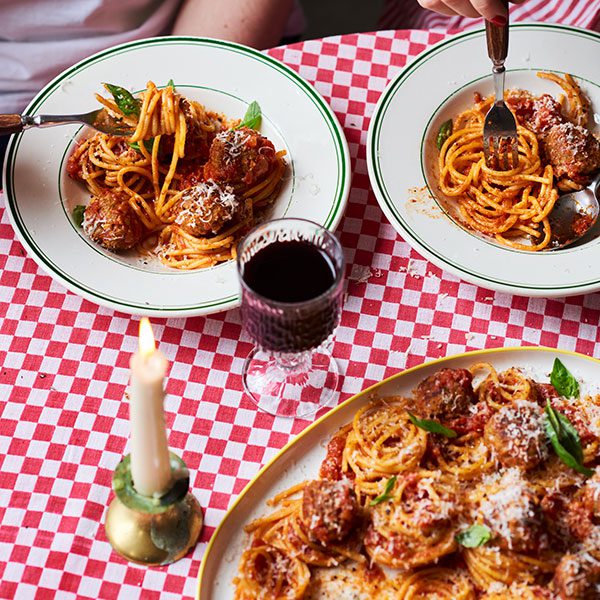
“Food is sensual – smell, taste, touch and vision. In relationships, too, many senses satisfied,” says psychologist Sandra Wheatley. That dance of ‘Do you like this?’, ‘How do you like that?’ is like seduction at one remove. After all, the only activity that’s as multi-sensory and intimate as eating together is sleeping together – which could, incidentally, be why most first dates revolve around coffee or wine, rather than dinner. “The way we eat is personal; unique to us,” says Justin Myers, romantic novelist and author of the cult blog Impeccable Table Manners: a hilarious and piercingly insightful analysis of the Guardian’s Blind Date column. “I’d never recommend going for food on a first date: it’s too much pressure, and a fixed amount of time – but eating together is a good way of sizing up another person. You can lay on airs and graces, but sooner or later your date will be making judgments about you; the way you eat noodles or dab your mouth with your napkin, or your refusal to touch ‘anything with a face’.”
Such revelations can either force you apart or bring you together. In hindsight, I should have known that the man who took pocket chopsticks to the pub for the purpose of eating crisps would be particular in other areas of life. Likewise, that the man who drank Huel meal replacement powder because he was ‘too busy to chew’ would struggle to make time for me. When we eat, we expose ourselves: not just our likes and dislikes but our appetites, our generosity – even our character. A friend once dated someone who, if he particularly liked a dish, would assemble the perfect forkful so that she could experience what he was experiencing. It was such a touching example of sharing one’s vision of the world – like taking someone you love to the top of a favourite hill or building and telling them to stand… just… there to get the best view.
"Sharing chips in a bus stop in the rain can feel more romantic than a fine dining restaurant serving eight courses"
Were that person to turn around and ask what they’re supposed to be looking at, you would feel a disconnect in your respective perspectives; which is why I could never date someone who doesn’t like tea in the morning. There is too much love to be found in taking it in turns to rise, stretch, pad to the kitchen and brew a cuppa in the right mug to the right strength with the right ratio of milk. It’s the most romantic part of my day. Itamar agrees: “For Sarit and me it’s the everyday things – knowing better than anyone else what someone wants to eat at a particular moment, and hitting that button. Those are the moments when the heart expands for me.”
For Ravinder Bhogal, who runs her restaurant Jikoni with the help of her husband Nadeem, that button is pudding. “There was a time early on in our courtship, when I knew he wanted me but remained a little out of reach. I was in my old flat testing dessert recipes for Jikoni, and I’d made a meringue roulade, a soufflé with apricots and a few other things. Nadeem surprised me with a visit. He ate the soufflé with such artistry and composition, appreciating it so much – then afterwards fell on the sofa in delight, and fell for me,” she laughs. The romance of pudding is that “it’s something we don’t need, but we want. If you spend time making a pudding for someone, you are giving of your time to create a wonderful, fleeting, luxurious moment – and that feels like love,” she says. On Ravinder’s lockdown birthday, Nadeem spent all day making a dish they’d seen on MasterChef Australia – a dish with many elements that she’d described as her ‘perfect dessert’. “It was a Guava Apple Snow Egg: a meringue egg with ice cream inside and guava granita,” she recalls. “I was blown away by the effort he’d gone to get silicone moulds and guavas – he got a parking ticket getting them from Stoke Newington – and follow the recipe, even though he can’t really cook an egg. It was worth it for that fleeting moment of joy.”
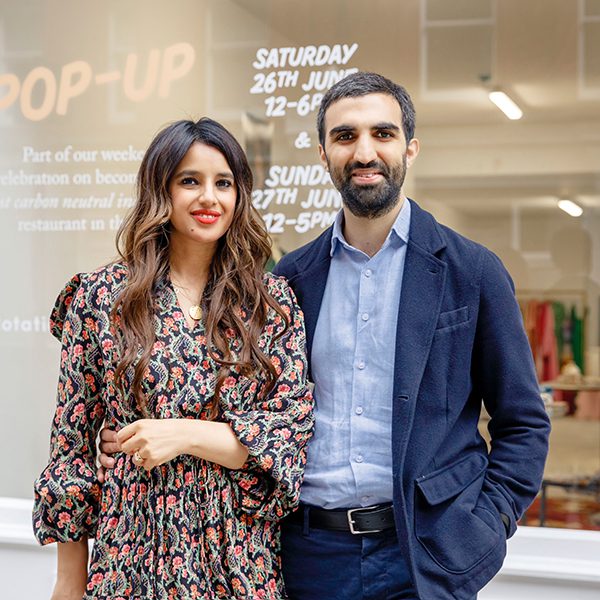
It takes time and money to prepare a meal, but time is the more telling ingredient. On the first occasion Ukrainian food writer Olia Hercules went round to her now-husband (and fellow food writer) Joe Woodhouse’s place for dinner, she was amazed by the lengths he’d gone to to impress her with ordinary ingredients treated with extraordinary care and time. “I thought it was funny that he wanted to cook for me; I didn’t know he could cook. Then I came round and it was next level,” she remembers. “He did a whole roasted cauliflower and, knowing I was Ukrainian, made a dill oil from scratch – which must have taken ages.” Yet their ultimate treat – the food they share on precious date nights snatched between looking after their two children – is a baked Vacherin Mont d’Or cheese, served with gherkins and boiled potatoes. “It’s the first meal we had after our son Wilfred was born, and it was magic,” Olia says, eyes bright at the memory.
That’s the funny thing about eating together, says Dr Wheatley. Often, it’s not so much about the food as the memories that go with it – “even (perhaps particularly) if they’re unusual or unpleasant. That’s what makes it funny – and memorable.” My friends Jon and Viv’s go-to treat is Papa John’s Hawaiian pizza because it was the first thing they ate, half-dead on the sofa, after a shared bout of food poisoning. My partner and I have a soft spot for sour cream and onion Pringles – the only food available on a plane that was grounded for hours. “It’s the event, as much as it is the food,” says Dr Wheatley.
That’s why sharing chips in a bus stop in the rain can feel more romantic than a fine dining restaurant serving eight courses, Myers observes. “Adding formality to dining usually filters out any romance from the occasion, whereas in Hollywood movies – the benchmark for all romance, of course – it’s the antihero who’s offering candlelit dinners in posh restaurants. The romantic lead takes them to a neon-lit neighbourhood to grab a burger from a little place that they know.” The fact that they feel comfortable doing that shows how in love they are, he explains. Dr Wheatley agrees: “If something feels romantic, it’s usually because it feels intimate – not in a bodily sense but because it’s just you and them at that bus stop, with people jostling past. You’re in a public place, but you’re alone together, sharing that moment in the rain.”
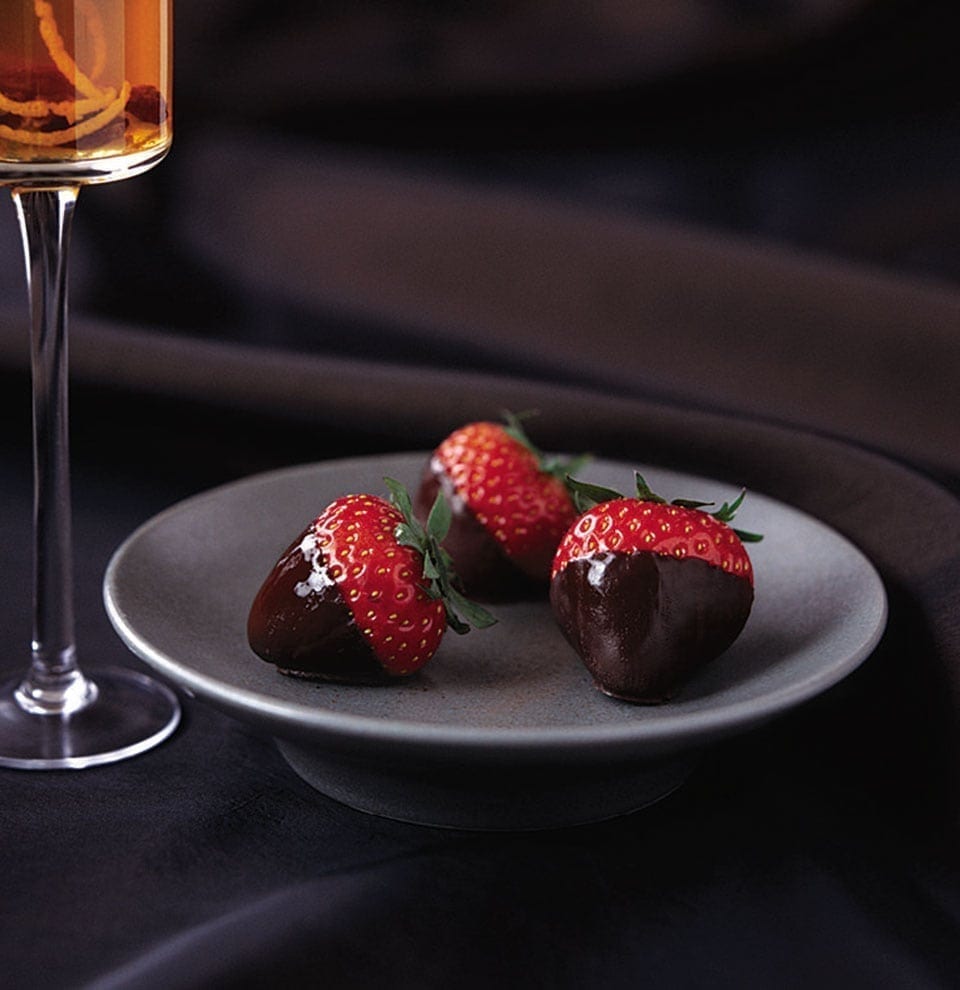
So is there no romance whatsoever in fancy meals out and chocolate-dipped strawberries? Dr Wheatley laughs. “These things have their place. Some meals are about creating or maintaining relationships, some meals are about rekindling the flame.” If you’ve been married for 20 years, chances are you’ve shared plenty of chips and burgers. “You might eat out together often, but just in the café in Sainsbury’s,” she points out. “Sometimes, though, you might need champagne and chocolate-dipped strawberries – something special to make it all feel special again.”
Aphrodisiacs through the ages
Even though evidence about the effectiveness of aphrodisiacs is sparse, for millennia humans have been looking for ways increase the appetite for love…
Chocolate has been considered somewhat ‘stimulating’ since the 16th century, when it was brought back from Mexico by the Spanish. Legend had it the Aztec emperor Montezuma would drink gallons of the stuff with his wives and concubines.
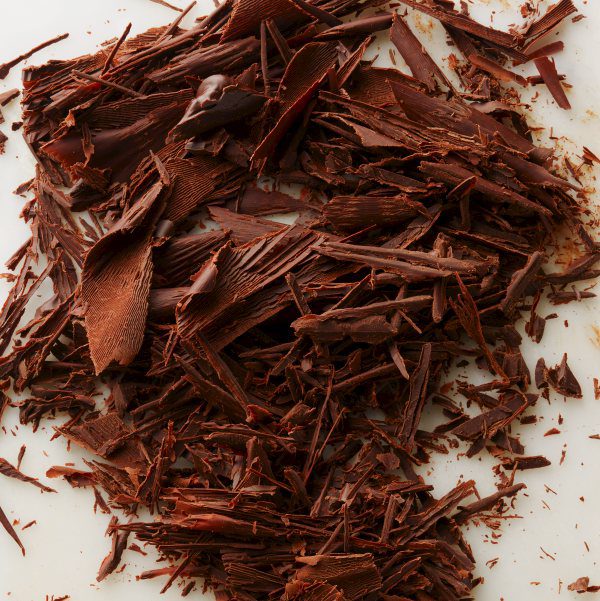
Partridge heart Cuneiform tablets from the Babylonian era recommended men cut the head off a partridge, eat its heart and drain its blood into a cup of water if they were in need of a boost.
Potatoes According to the 17th century herbalist William Salmon, potatoes are vegetables that “restore in consumptions, and provoke lust”. It wasn’t an unusual belief – even Shakespeare’s Falstaff referred to the aphrodisiac qualities of the potato.
Asparagus An English botanist popularised the ancient belief that asparagus acts as an aphrodisiac. In his complete herbal of 1653, Nicholas Culpeper wrote that the slightly phallic vegetable “stirreth up bodily lust in man or woman, whatever some have written to the contrary” – something many believed to be as true of carrots and celery as it is of asparagus.
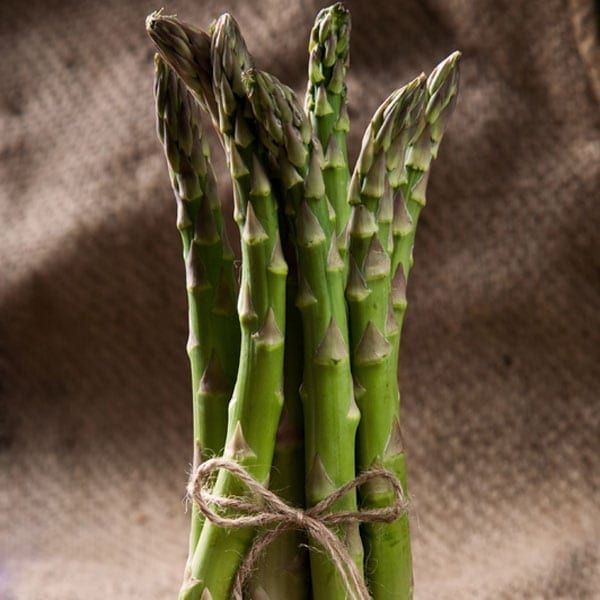
Oysters have been associated with love and sex since ancient times and remain one of the most potent symbols of food and love. Casanova wrote deliriously in his diaries: “We ate 50 oysters and drank two bottles of sparkling champagne, which made my two guests eruct and blush and laugh at the same time.”
Bay leaves Before chocolate-dipped strawberries and the ‘my last Rolo’ campaign, pinning five bay leaves to one’s pillow before bed was a Valentine’s Day tradition for women. If you dreamt of your sweetheart that evening, you would – legend had it – be married before the year was out.
Sparrow brains The sparrow was a totem of the Ancient Greek goddess of sexuality, Aphrodite. As a result, the little bird – and its brains – became bound up with having a high sex drive.
Durian fruit The Javanese have long believed the durian to have aphrodisiac qualities. There’s even an Indonesian saying, durian jatuh sarung naik, meaning “the durian falls and the sarong comes up”.
Basil This is the leaf Romanian women pin to their pillows, for the same reason British women once pinned bay leaves: to inspire marriage. In Italy, one of the colloquial names for basil is amorino, meaning ‘little love’.
Restaurants of love
“Love and food go best together when there are no distractions, and enough ambience to chat freely without being overheard,” says Myers. It’s hard to disagree with that. Here are our interviewees’ favourites:
Joe Woodhouse and Olia Hercules
40 Maltby Street, London: “Whenever we have something to celebrate – or not. It’s the happiest of places for us. It feels like a special occasion going there as everything is sublime – from the food, to the wine, to the staff.”
Ravinder Bhogal and Nadeem Lalani
Maison Francois, London: “There are some places where the service is so dreamy, you forget you’re a restaurateur; that this is what you do for a living. We love going to Maison Francois, where there’s a whole trolley of puddings… You can see why it’s one of our favourites. It feels glamorous, yet for everybody.”
Sandra Wheatley
Restaurant Can Pere, Andorra: “For the lifelong friendships forged as accompaniments to the food (with the after-hours singing and drinking as catalysts too!!)”
Justin Myers
Polpo, London: “My boyfriend is a cancer survivor and for a long time after his annual appointment to get the results of his check-up, we’d pop in to Polpo to celebrate another year of being clear. We used to like going there on a bank holiday too. We’ve find it familiar, reassuring and comforting, and when you’re packed in tight in one of the nicer corners, with the acoustics just the right side of buzzy, it can be intimate and romantic – just the two of you, in a bubble of calm amid the chaos.”
José Pizarro and Peter Meades
Bob Bob Ricard, London: “It’s top of the list for celebrations and romantic dates. The food and service reflect what hospitality means. It’s a happy place for us.”
Itamar Srulovich and Sarit Packer
Uri Buri and Brunswick House: Uri Buri is a restaurant in Acre, North Israel, and it’s where I proposed to Sarit. In London it has to be Brunswick House: beautiful setting, stunning food, and it’s five minutes’ walk from our home, which is the most important thing.
Clare’s new book Hungry Heart: A Story of Food and Love is out now (published by Quarto), and available here.
Subscribe to our magazine
Food stories, skills and tested recipes, straight to your door... Enjoy 5 issues for just £5 with our special introductory offer.
Subscribe
Unleash your inner chef
Looking for inspiration? Receive the latest recipes with our newsletter
